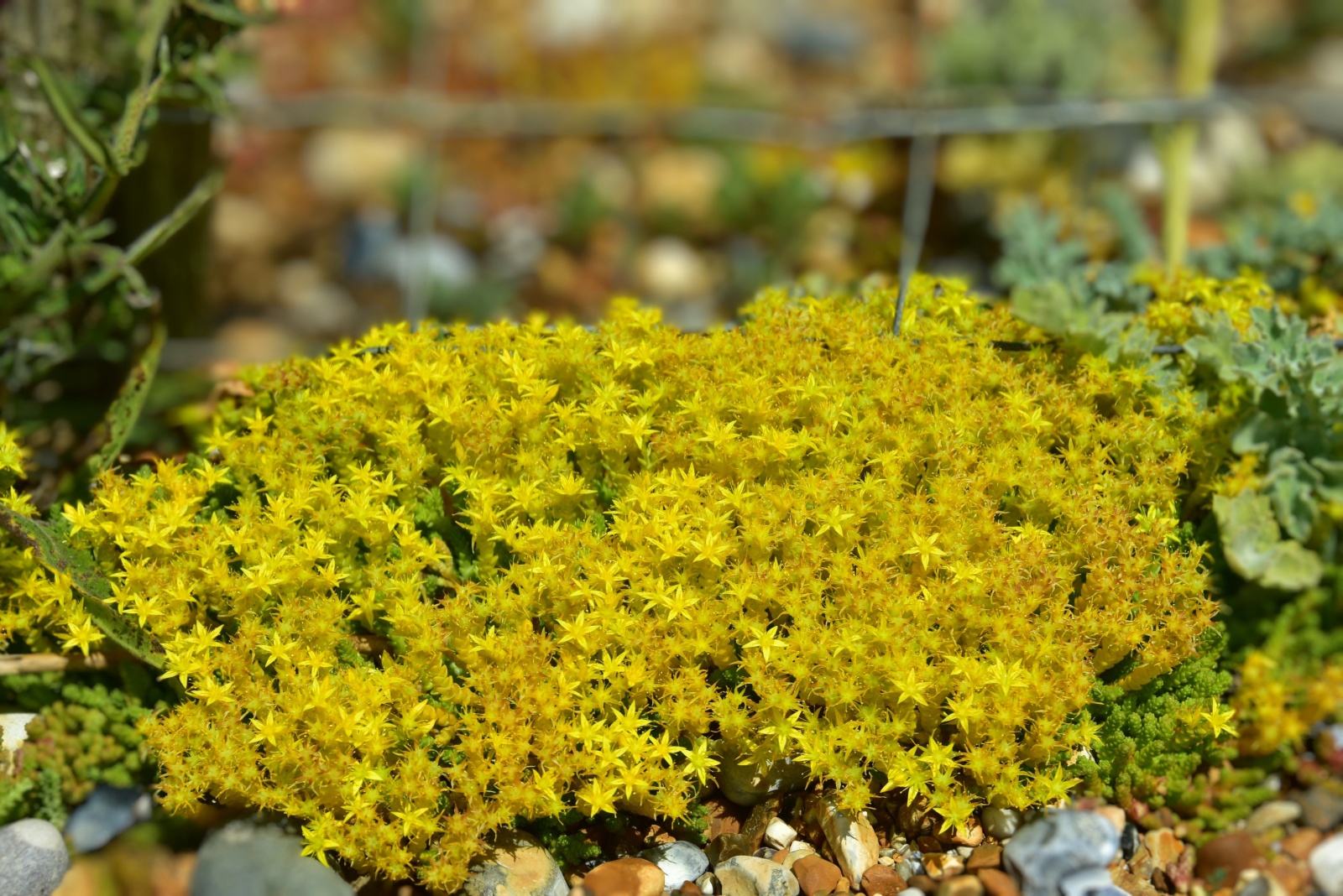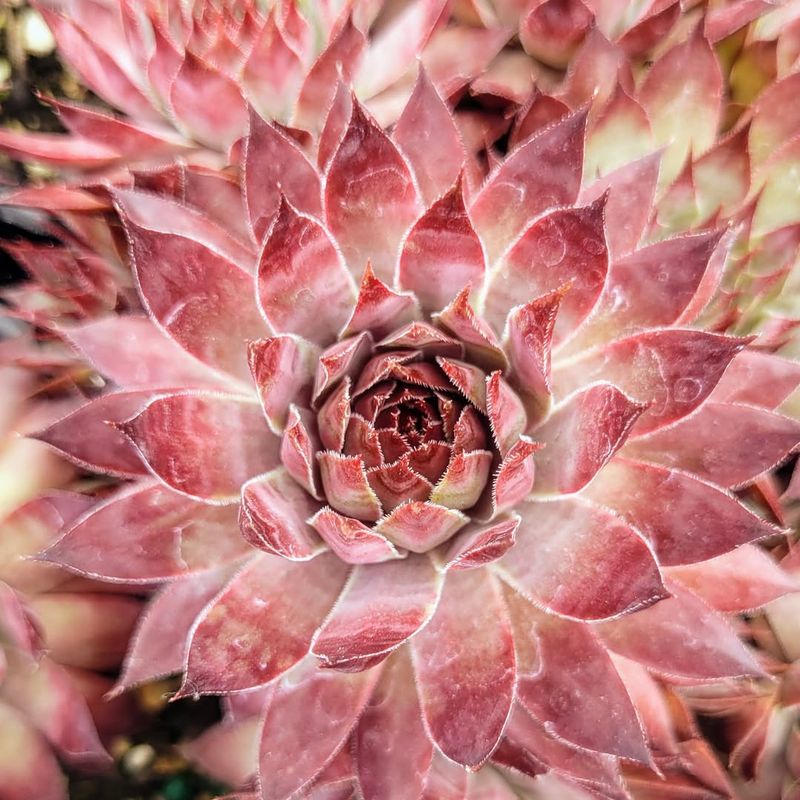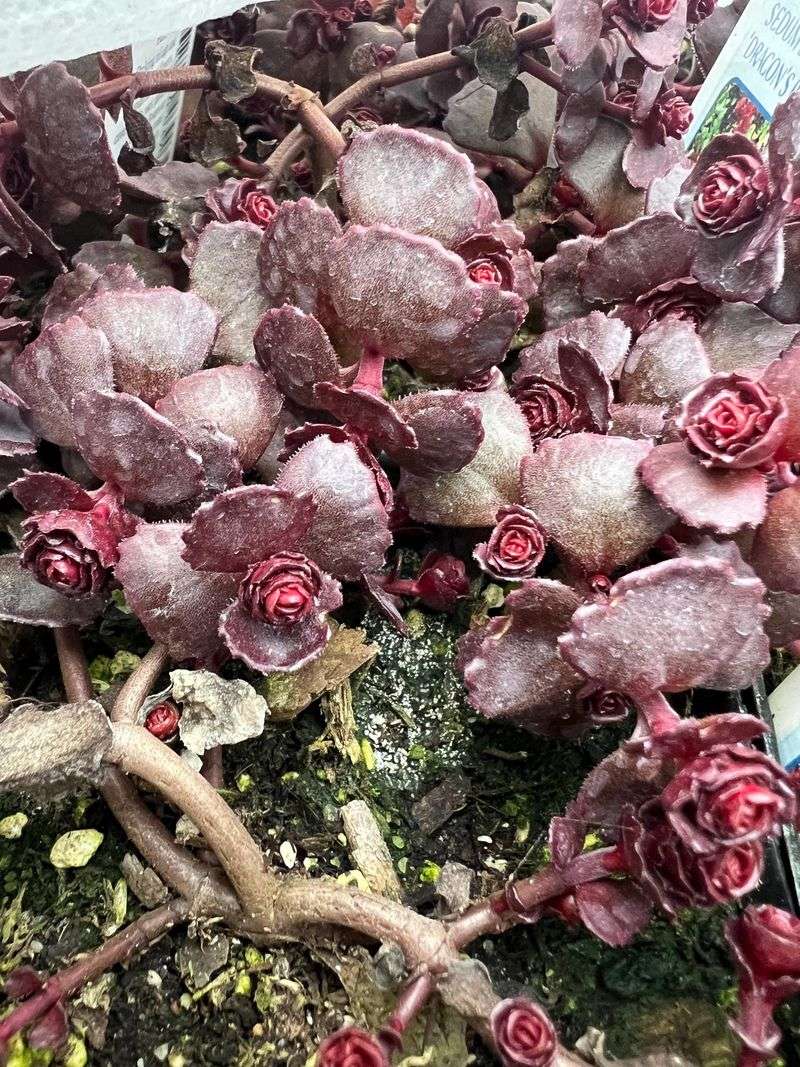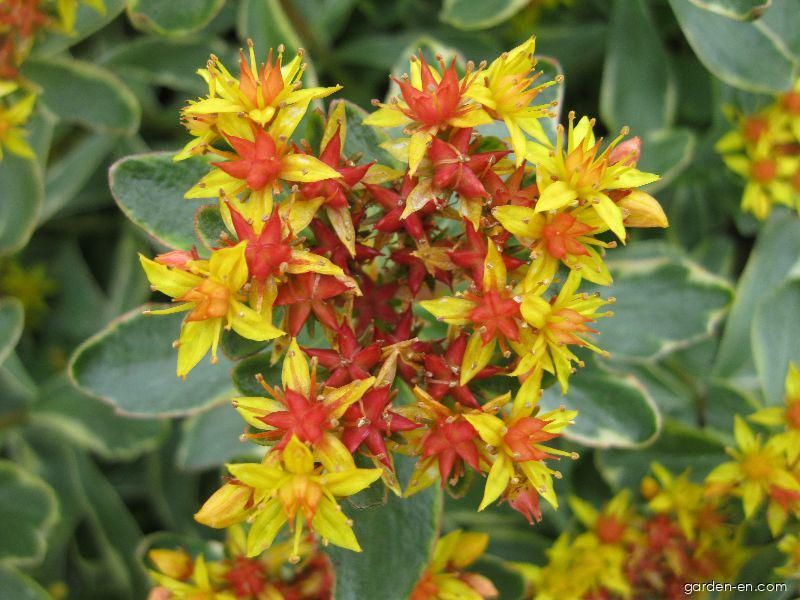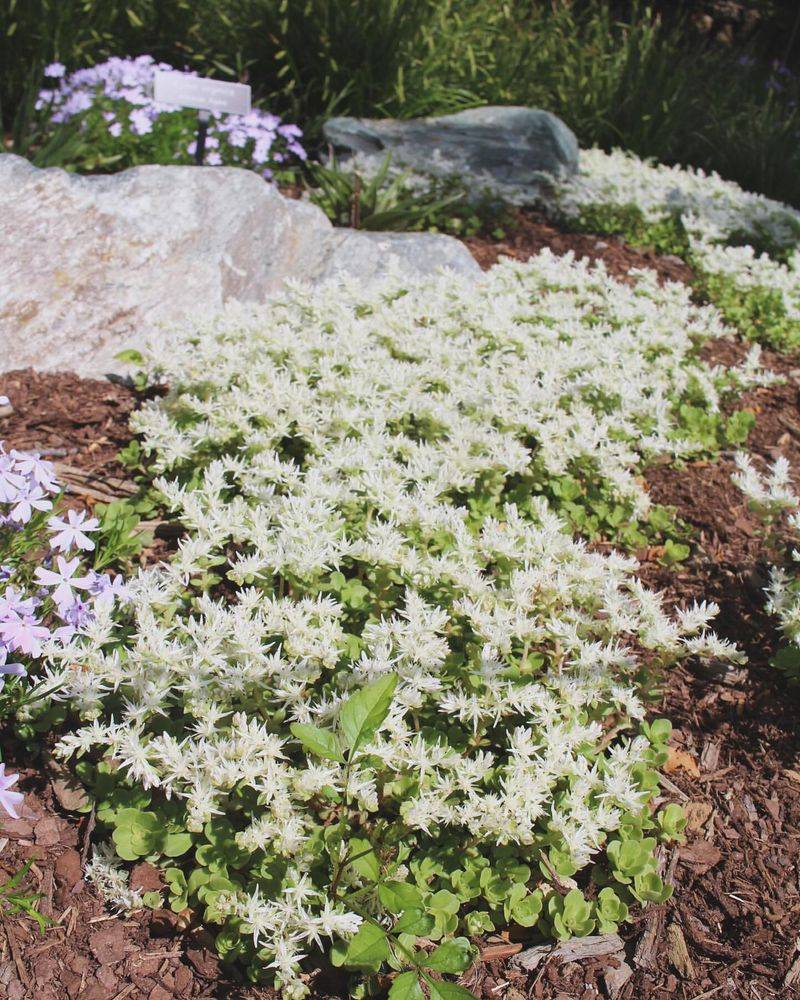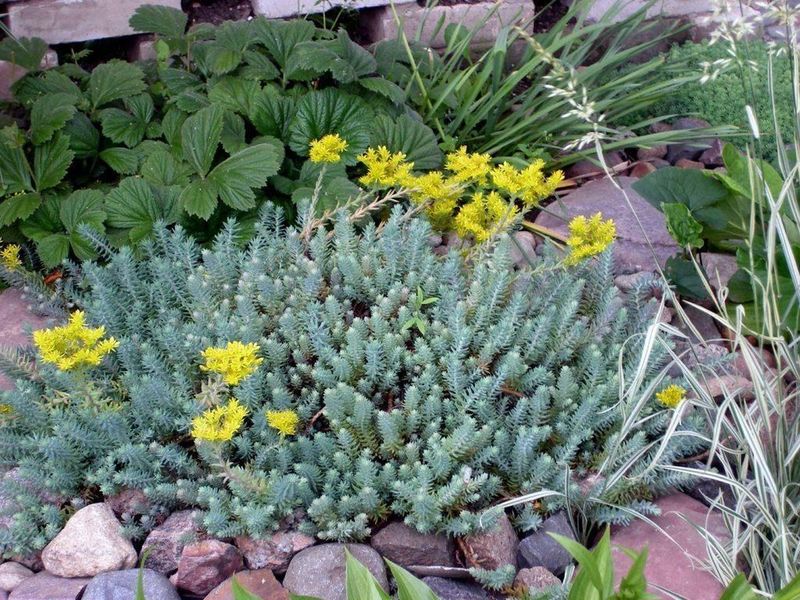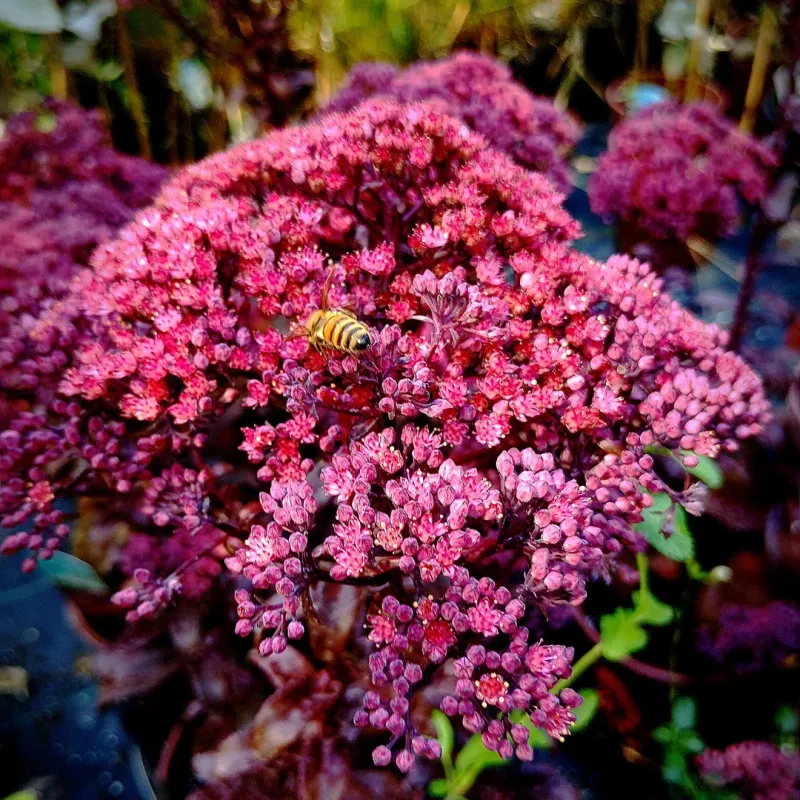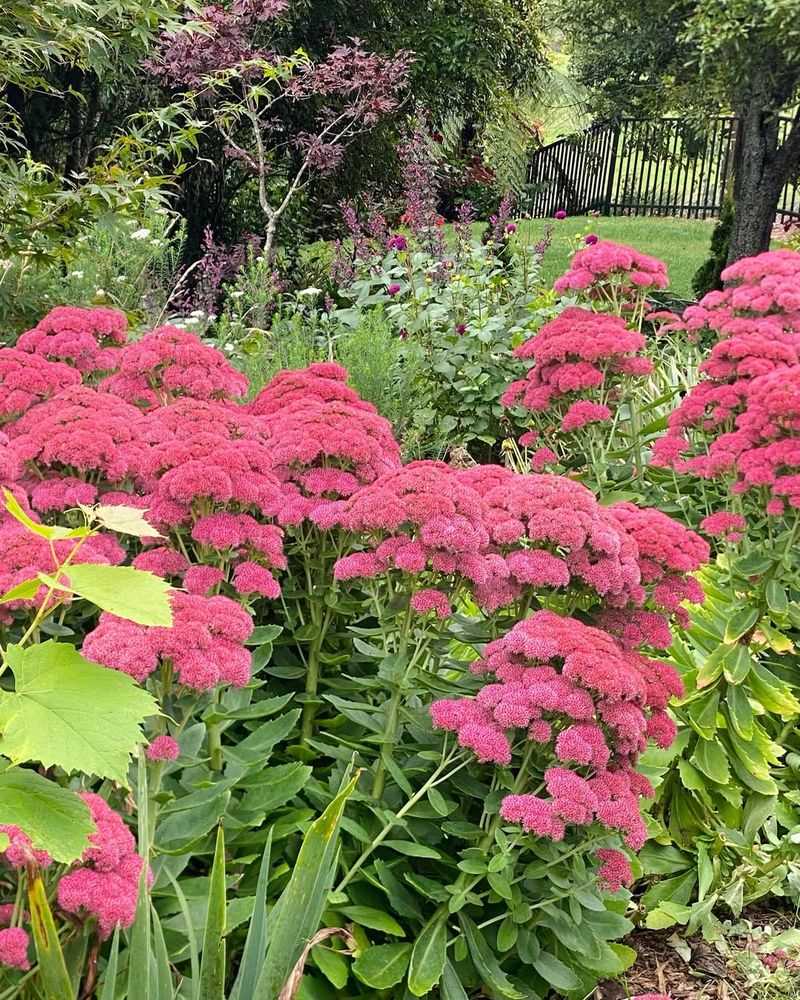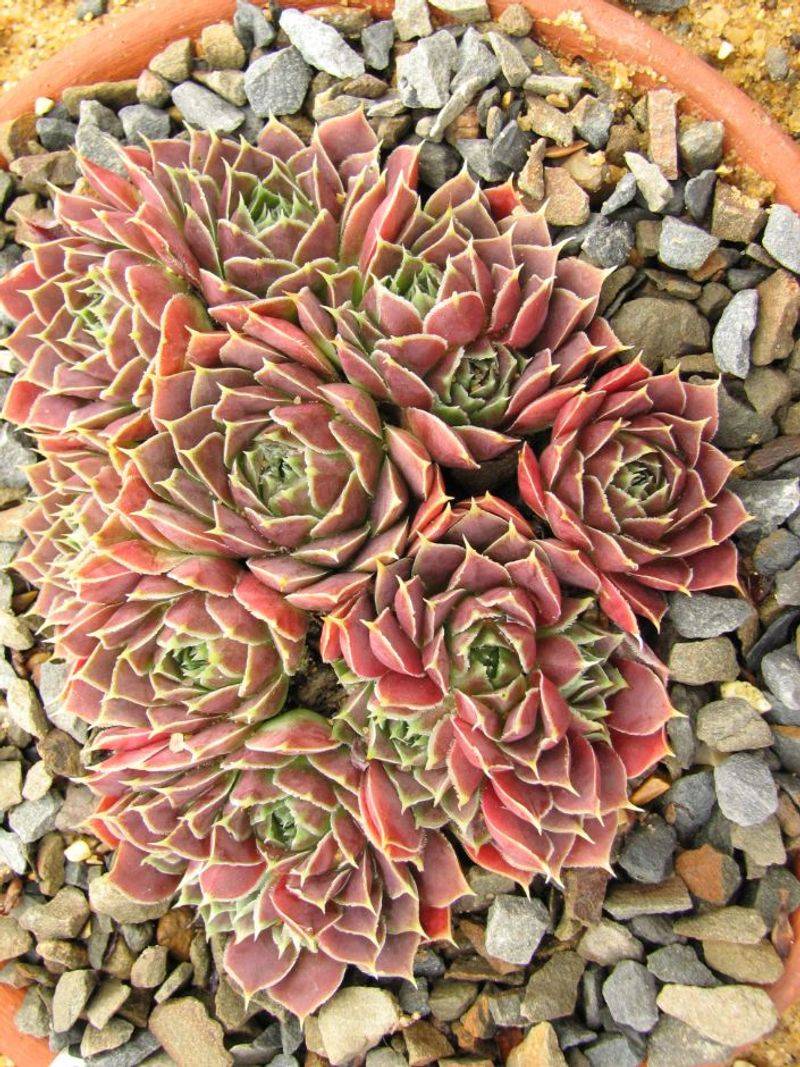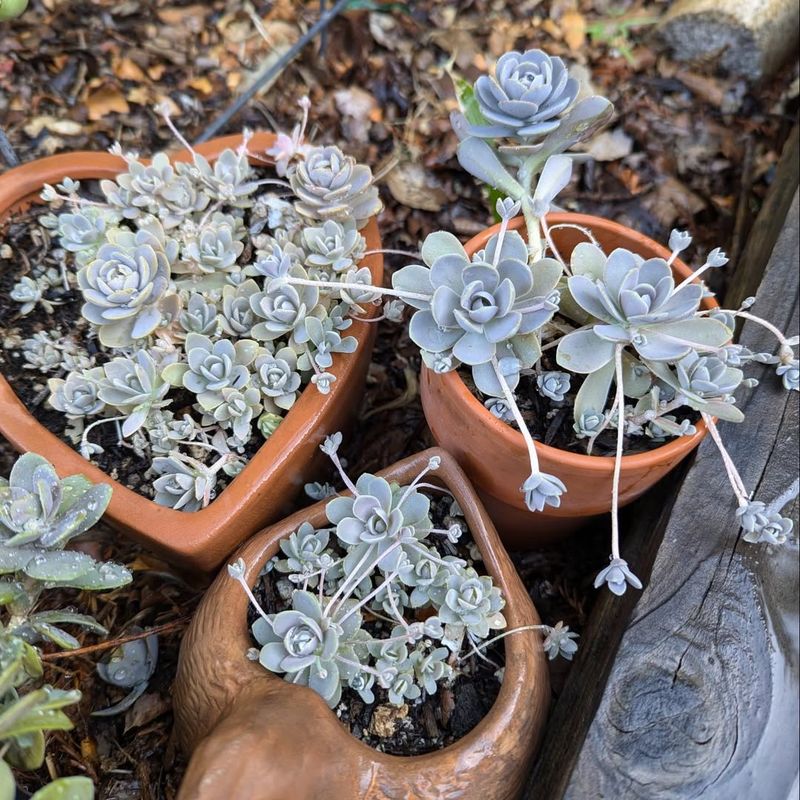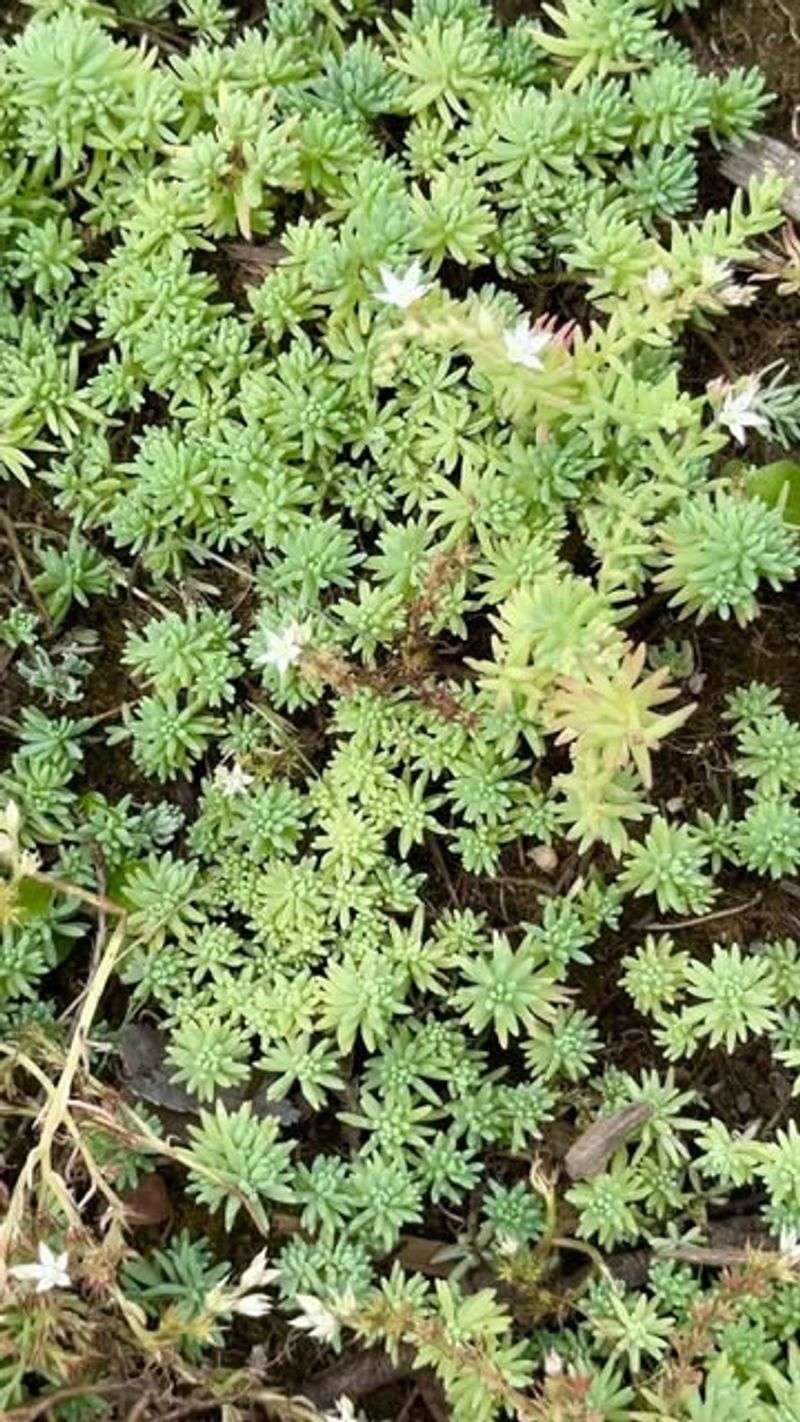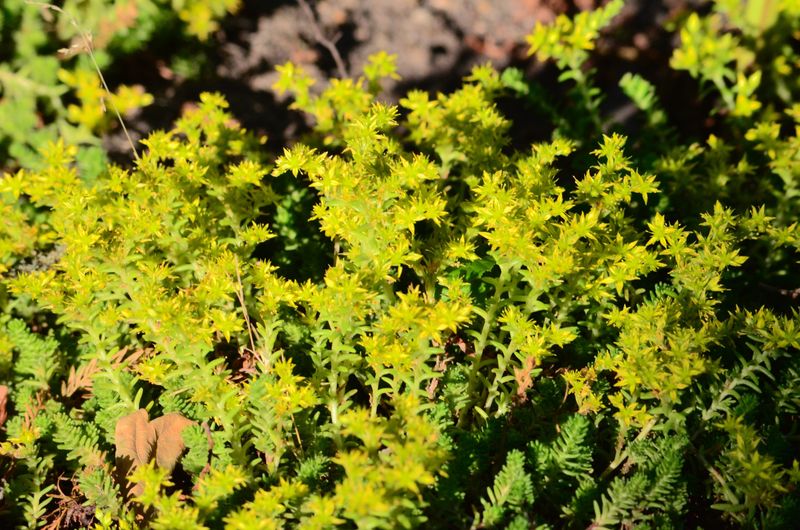Wisconsin winters can be brutal, with freezing temperatures and heavy snowfall that would make most gardeners think twice about growing succulents outdoors.
But here’s the good news: certain cold-hardy varieties actually thrive in these challenging conditions, returning year after year with stunning color and texture.
These tough plants add unique beauty to your garden while requiring minimal care once established. If you’re ready to discover succulents that laugh in the face of Wisconsin’s coldest months, you’re in for a pleasant surprise.
1. Sempervivum (Hens And Chicks)
Few plants handle Wisconsin’s winter extremes quite like Sempervivum. These charming rosettes multiply rapidly, creating dense mats that look fantastic tucked between rocks or along pathway edges.
Their thick, fleshy leaves store water efficiently while their low-growing habit helps them stay protected under snow cover. Many varieties develop stunning burgundy or copper tones when temperatures drop, adding unexpected color to your winter landscape.
Plant them in well-draining soil and forget about them—they’ll reward your neglect with years of reliable beauty across Wisconsin’s changing seasons.
2. Sedum spurium (Two-Row Stonecrop)
This mat-forming groundcover spreads quickly to fill bare spots while staying short enough to avoid overwhelming nearby plants. Sedum spurium produces cheerful pink or red flowers in summer that butterflies absolutely adore.
What makes it perfect for Wisconsin gardens is its ability to survive buried under snow for months without rotting. The foliage often takes on reddish hues as autumn approaches, providing seasonal interest beyond the bloom period.
Established plants tolerate drought remarkably well during summer heat waves, making them genuinely low-maintenance throughout the year.
3. Sedum acre (Goldmoss Stonecrop)
Imagine a carpet of tiny golden stars covering your garden in early summer—that’s Sedum acre in full bloom. This vigorous spreader forms dense mats only a few inches tall, perfect for rock gardens or green roofs.
Wisconsin gardeners appreciate how it handles everything from blazing sun to poor soil without complaint. The evergreen foliage stays attractive even under snow, and plants bounce back quickly each spring.
Just give it good drainage and watch it work magic in spaces where other plants struggle to establish themselves.
4. Sedum kamtschaticum (Orange Stonecrop)
Bright orange-yellow blooms light up midsummer gardens when this reliable performer hits its stride. Unlike some spreading sedums, this variety maintains a tidy clump habit that won’t overtake your entire bed.
The scalloped leaves add textural interest even when flowers aren’t present, and fall brings attractive bronze tones to the foliage. Wisconsin’s cold temperatures pose no threat to this Siberian native, which evolved in climates far harsher than anything the Midwest dishes out.
It thrives in average garden soil with occasional watering during extended dry spells.
5. Sedum ternatum (Woodland Stonecrop)
Most succulents demand full sun, but this North American native actually prefers shade—a rare trait that opens up new planting possibilities. Delicate white flowers appear in spring, creating a soft contrast against the whorled green leaves.
For Wisconsin gardeners dealing with shady areas under trees or along north-facing walls, this plant solves the challenge beautifully. It spreads gently without becoming aggressive, forming attractive colonies that look natural rather than overly manicured.
Consistent moisture helps it establish faster, though mature plants tolerate typical woodland conditions without fuss.
6. Sedum reflexum (Blue Spruce Stonecrop)
With needle-like leaves in striking blue-gray tones, this unusual sedum resembles a tiny evergreen forest. The cascading growth habit makes it exceptional for container edges or spilling over retaining walls.
Yellow flower clusters emerge on tall stems in summer, creating a beautiful color combination with the blue foliage. Wisconsin’s temperature swings don’t faze this European native, which handles everything from subzero cold to summer humidity.
The year-round foliage color provides consistent visual interest, especially valuable during months when most perennials have gone dormant.
7. Sedum telephium (Orpine)
Standing taller than most groundcover sedums, this upright variety reaches about eighteen inches and makes a bold statement in perennial borders. Thick, oval leaves clasp sturdy stems that support large flower clusters in shades ranging from pink to deep burgundy.
Late summer blooms arrive exactly when many Wisconsin gardens start looking tired, providing fresh energy to your landscape. Pollinators flock to the nectar-rich flowers, and dried seed heads offer winter interest plus food for birds.
Cut stems back in early spring to make room for fresh growth.
8. Sedum spectabile (Showy Stonecrop)
Butterflies treat the massive flower heads like landing pads, covering them completely during peak bloom in late summer. This classic cottage garden plant combines substantial presence with genuine toughness that Wisconsin conditions demand.
The gray-green foliage looks attractive all season, and plants maintain their structure even through heavy rains. As temperatures cool in autumn, flowers deepen to rich rose tones that complement fall foliage beautifully.
Leave the dried stems standing through winter—they provide architectural interest and shelter for beneficial insects until spring cleanup.
9. Jovibarba heuffelii (Hen And Chicks)
Often confused with Sempervivum, this close relative forms tighter, more symmetrical rosettes that divide rather than produce offsets on runners. The result is dense clusters that create stunning geometric patterns in rock gardens.
Leaf colors range from soft green to deep purple, with many varieties changing dramatically through the seasons. Wisconsin’s harsh winters actually enhance the coloration, bringing out the most intense tones.
These plants appreciate excellent drainage even more than their cousins, so amend heavy clay soils with plenty of grit before planting.
10. Orostachys iwarenge (Chinese Dunce Cap)
This quirky succulent produces rosettes that look like tiny spinning tops or architectural sculptures in your garden. In autumn, a spectacular flower spike shoots up from the center, covered in white blooms that give the plant its amusing common name.
After flowering, the leaves stay behind numerous offsets to continue the colony. For Wisconsin gardeners wanting something truly different, this Asian native delivers both cold hardiness and conversation-starting appearance.
Plant it where you can appreciate the dramatic flowering display each fall.
11. Sedum album (White Stonecrop)
Tiny leaves packed tightly on spreading stems create a fine-textured groundcover that fills spaces quickly. White star-shaped flowers blanket the foliage in early summer, creating what looks like fresh snowfall.
This European native handles Wisconsin’s climate with ease, thriving in lean soils where pampered plants would struggle. The evergreen foliage often develops pinkish tints in cold weather, adding subtle color variations through winter months.
It’s particularly useful for green roofs, between pavers, or anywhere you need tough, attractive coverage with minimal input.
12. Sedum sexangulare (Tasteless Stonecrop)
Despite the uninspiring common name, there’s nothing boring about this vigorous spreader with bright green, needle-like foliage. It forms dense mats that suppress weeds while adding year-round texture to Wisconsin gardens.
Small yellow flowers appear in early summer, though the real star is the evergreen foliage that maintains its fresh appearance through all four seasons. This European native tolerates foot traffic better than most succulents, making it suitable for pathways or between stepping stones.
Once established, it requires virtually no maintenance beyond occasional trimming to keep it within bounds.

